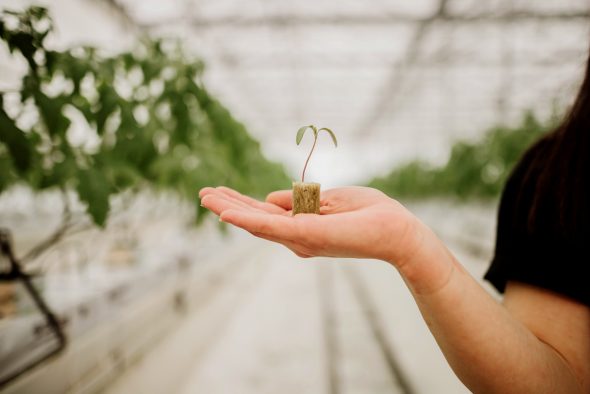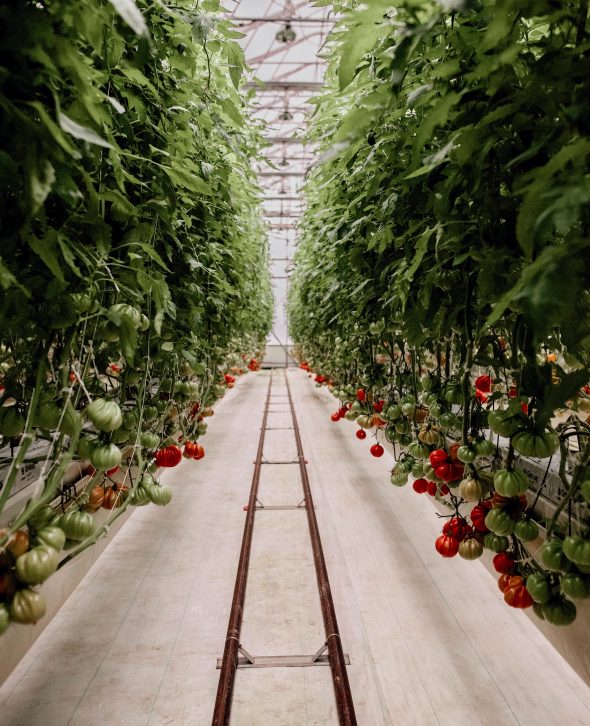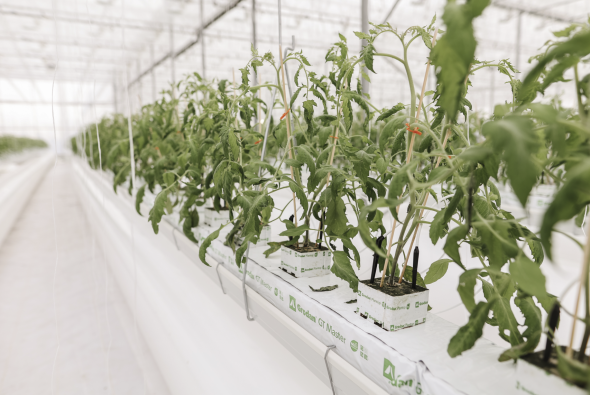Let’s talk grafting
Ecology

Ecology
Why is grafting so common in greenhouse cultivation—and what are its advantages?
Grafting is a horticultural technique that involves joining two separate plants to create a single, more efficient one. In the case of our mamas—tomatoes grown in greenhouses—this method is widely used to boost plant resistance and optimize production. It also helps reduce pesticide use by naturally strengthening plant defence against diseases, and increases the lifespan of plants and their tolerance to environmental stress.
Specifically, grafting combines a rootstock—selected for its robustness, disease‑tolerance and root vigour—with a scion (or fruit‑bearing variety), chosen for the quality of its tomatoes. Grafting is done manually, usually at a very young stage of the seedlings, by cutting the stems of both plants and joining them using small clips or silicone tubes.
After grafting, the plants are placed in a healing chamber where temperature, humidity and light are carefully controlled to encourage tissue fusion.

Since greenhouses must operate efficiently all year round, grafting has become an essential practice to ensure stable, sustainable, and high‑quality production.

At tomaté!, nothing is left to chance. Greenhouse cultivation is the sum of every effort and attention—even the smallest ones—in order to maintain the balance necessary for the flourishing of our mamas